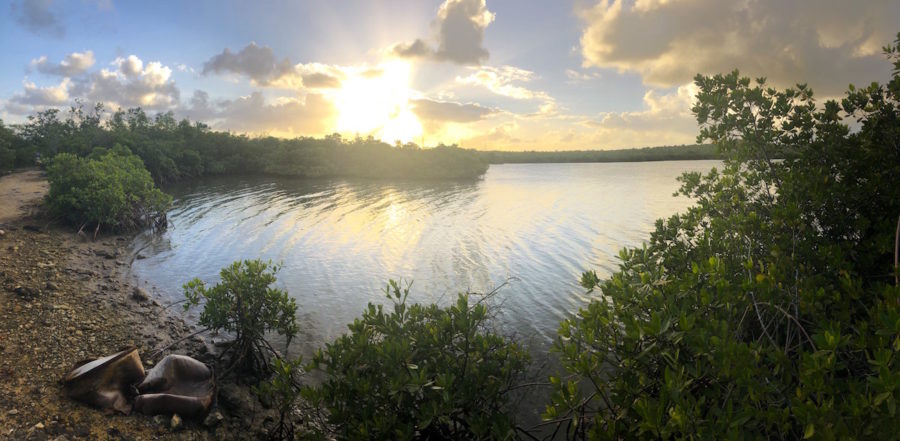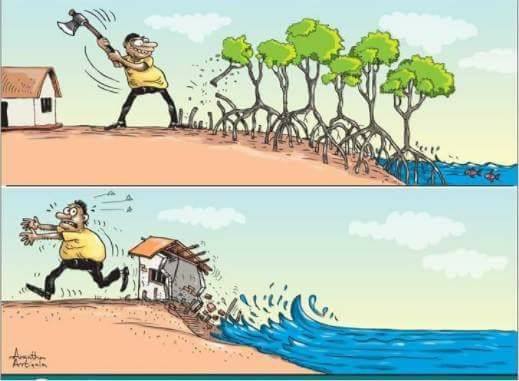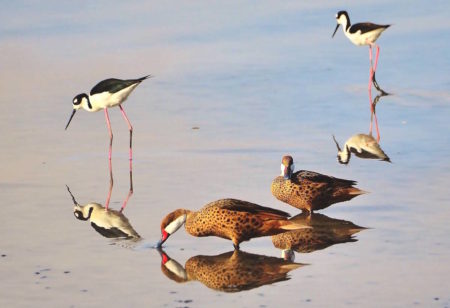
In Antigua, when we think of wetlands we think of swamps—smelly, waterlogged places riddled with wicked mosquitoes and starving sandflies. Why, oh why would we want to spend precious life moments at a swamp?! While some may find wetlands unappealing, in Antigua and across the Caribbean they perform vital ecological functions. In an area where tourism flourishes, they also have unexplored economic potential, if managed sensitively.
On February 2nd, 1971, understanding the importance of wetlands to human life and wellbeing, an international treaty was signed in Ramsar, Iran, called the Ramsar Convention or Convention on Wetlands. Annually on 2nd February, since 1997, we recognize the value of these watery spaces on World Wetlands Day. In the Caribbean, as we struggle to balance development and frugal use of our natural resources and as we begin to understand how these wetlands support our economy and health, this celebration is necessary. This year’s theme is “Wetlands for a Sustainable Urban Future.”
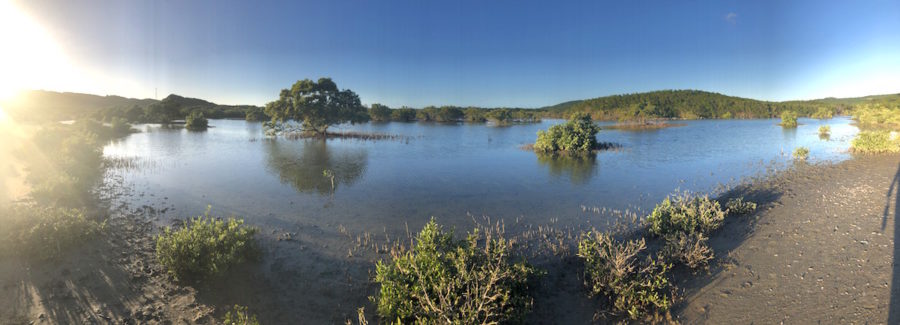
Why is the celebration of World Wetlands Day a vital date on the Caribbean calendar? Because, as important as our wetlands are, they face real threats, primarily from backfilling, urbanisation, development, and use as illegal dumping grounds. Sadly, the Fitches Creek Swamp, one example in Antigua, can be called Cooks Dump Part II. While swamps are naturally strong smelling, a properly-functioning swamp, not adversely manipulated by human hands does not bear these overpowering, nauseating odours.
Wetlands are areas where water covers the soil, permanently or seasonally. They vary from country to country and may be naturally occurring or artificially made. In Antigua and Barbuda, wetlands include mangrove swamps such as Christian Cove and Fitches Creek Swamp; dams such as Bethesda, and Potworks; ponds such as McKinnon’s; reservoirs such as Wallings Reservoir; Creeks such as Indian Creek, and lagoons such as our internationally known and Ramsar-designated site, the Barbuda Lagoon.
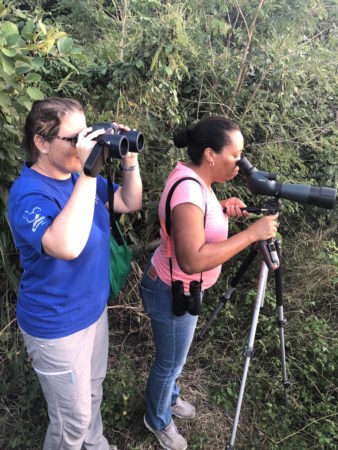
How are wetlands important to us? Wetlands reduce flooding. Think of them as a sponge. They soak up floodwater, releasing it gradually. They are also excellent filters. In built-up areas where concrete and asphalt have replaced water-absorbing soil, surface run-off is increased during rains. The plants in wetlands filter this run-off, which can include untreated sewage, pesticides and fertilizers. Some of these pollutants can also be trapped in the soil below the water in the areas. Water leaving wetlands is in considerably better “shape” than when it entered.
Wetlands in Antigua and elsewhere in the Caribbean act as an effective barrier against wind and wave action during storms. Think of them as a naturally occurring wall or breakwater. They are also important for our fisheries. Marine wetlands are nurseries for our sea life: fish, shrimp, lobster and the list goes on. Just think about the Barbuda Lagoon, and Antigua’s famous lobsters! No wetland, no baby fish, no big fish.
Now to the fun part! As a major tourist destination, Antigua & Barbuda can add to its product by promoting the use of wetlands. With interpretive signage and non-intrusive boardwalks and paths, wetlands can support eco-tourism (both locally and internationally). In Antigua & Barbuda’s wetlands you are surrounded by wildlife, including resident birds such as the sleek-looking Green Heron; migratory birds that travel jaw-dropping distances to flee the cold such as the tiny, unassuming Ruddy Turnstone, or the majestic Osprey that swoops in, perches and immediately demands your attention. Residents can take their exercise routine to the wetlands and have a refreshing walk on paths or boardwalks. Carefully managed non-motorised water sports in some wetlands can also be a boon for the economy.
In addition to nature, there is almost always a significant historical link to our country’s wetlands. There is the Pre-Columbian settlement at Indian Creek, or the wells dug close to wetlands in Bethesda and Parham, some dating back to the 1800s, still seen today.
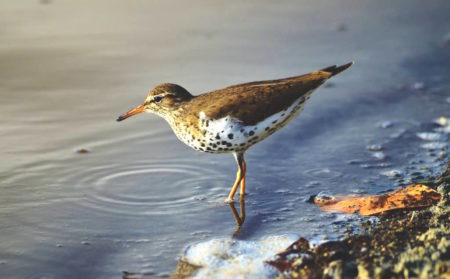
Our wetlands support high fashion too! One Antiguan bird guide often relates his stories of taking internationally acclaimed designers to wetlands where they sit, observe, and ponder on colours for the new season.
Visiting Caribbean wetlands can be a pleasant, relaxing experience – a place also to learn and observe. Many of the wetlands in Antigua & Barbuda are quite accessible – so, if you are interested in wetland birds, you are welcome to contact the Environmental Action Group in Antigua at eagantigua@gmail.com. They will be happy to recommend sites to visit and hook you up with a local, knowledgeable birder. Also, don’t forget to take strong insect repellent; the mosquitoes and sand flies are no myths!
By Natalya Lawrence, Coordinator, Offshore Islands Conservation Programme, Environmental Awareness Group, St. John’s, Antigua & member of BirdsCaribbean’s Media Working Group.
